Places covered in this article: Nartiang monolith garden, Krang Suri falls, Shnongpdeng, Dawki. We have a separate article where we have covered our travel to Shillong, read it here.
Often times, we visit an exquisite region and wonder why such a beautiful place isn’t sojourned by more people? Then we realise the reason it is unblemished in the first place is because it is untouched! Meghalaya is the perfect portrayal of this rationale. In this state, the usual comforts like availability of phone connectivity and easy transport options are few and far between. But once you get your way around these vexations, Meghalaya stands out like a jewel in a crown! Today, we take a look at perhaps, one of the most surreal places I have been to. Welcome to Meghalaya, folks, a place that is undoubtedly on the gates of heaven!

Northeast India has often intrigued me in terms of cultural heritage and its solitary, cloistered originality. I visited Meghalaya and wandered across its nooks and corners in the October of 2021. Monsoon was just over, but the clouds still lingered on; afterall, Meghalaya is the abode of clouds! This place possesses a unique medley of its many boons. The serene hikes, the extraordinary living root bridges, and the mystic aura of the groves, each carry an unparalleled guise. With all its stunning natural and cultural beauty, Meghalaya presents a spectacle to behold!
In this article, I shall cover the first two days of my travel to Meghalaya, starting from Shillong. First, we explore the unique Nartiang monolith garden and the enticing Krang Suri waterfall. We then explore the sublime Shnongpdeng village near Dawki, followed by the nearby Indo-Bangladesh border. In part 2 of this series, I shall take you to the scintillating Mawryngkhang trek (also known as the Bamboo Trail), followed by the famous hike to the living root bridges in Nongrait. In the final part of this series, we explore the city of Cherrapunji and the Mawlynnong village (which is regarded as Asia’s cleanest village). Later, we take a tour of the serene Sacred Groves in Mawphlang village, before cultimating our expedition.
Shillong
The capital of Meghalaya is a city of dreams. The hills and low lying clouds give way to a buzzing Shillong with a placid way of life. While I didn’t spend a lot of time in Shillong this time, we have previously covered our expeditions in this tranquil town – be sure to read that! Shillong is a rich city with regard to its culture as well as beauty. We reached Shillong from Guwahati, which is the preferred option for most people. Guwahati provides good air and rail connectivity to most of India’s metropolitans, making it a favorable entry point. The journey from Guwahati to Shillong is around 125km. Thanks to the absolutely scenic roads, you won’t realise how time passes by on this journey! After arriving in Shillong, we stayed there for a night to start our odyssey across Meghalaya the next day.

Come next morning, we started to Dawki, which is around 80km south of Shillong, if you take a direct route. On our way to Dawki, we took a couple detours to explore the Nartiang Monolith Garden and the Krang Suri falls.
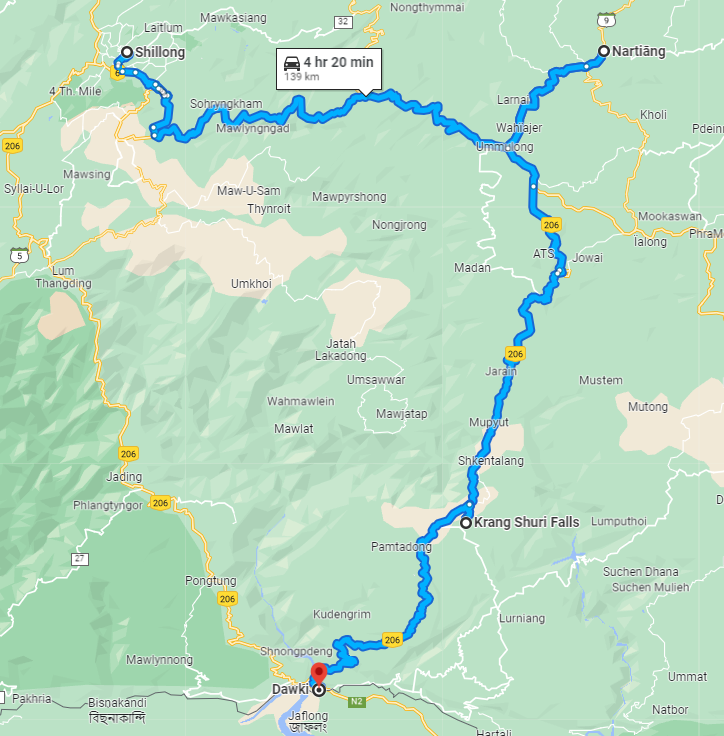
As we travel further away from Shillong, settlements are far and few between. The roads are narrow double lane pavements and usually, there is barely any traffic. Don’t get me wrong though, the journeys are still breathtakingly serene! However, you would be travelling amidst forests with hardly any facilities (petrol stations, food joints, etc.) nearby. So make sure you pack enough suppliments to last.
Nartiang Monolith Garden
En-route Dawki, the town of Nartiang has a garden of monoliths, about 65km away from Shillong. While this is a comparatively lesser visited place, it is indeed unique and unlike anything you’d have seen before! The clusters of monoliths here mark the reigns of the erstwhile kings of the Jaintia region of Meghalaya, which mark a significant era in the its history.

What really makes this place unique is that it the only collection of hundreds of monoliths of all sizes. Due to the persistence of oral tradition and folklores, there are many beliefs regarding the origin of this place. Tales suggest that U Mar Phalyngki, the strongman of the Phalyngki clan, who was a trusted lieutenant of the ruling Jaintia king, erected the tallest monolith in this garden to commemorate their victory in a battle in the early 1500s. Many other monoliths were erected between then and 1835 AD by different Jaintia clansmen and represent important milestones in history.

Myths and legends aside, the mere existence of these gargantuan multi-tonne monoliths is perplexing. How the people – centuries ago, without modern-day tools – were able to shape, erect and place these monoliths is anyone’s guess! This bucolic garden is rarely crowded, so you can cover it in solitude in less than an hour. If you are travelling southwards from Shillong, make sure to pay a visit to the Nartiang monoliths. Trust me, it’s worth the detour!
Krang Suri Falls
Nestled in the serenity of Jaintia hills near Dawki, the Krang Suri waterfall is one of the most scenic waterfalls. It is blessed with glistening blue waters and picturesque surroundings. From the area where the vehicle is parked, a facile 20 minute pathway takes us down the hill towards the waterfall. As is the nature of this state, even this trail provides some stunning views of the lush forests nearby!

Once we descend the hill, the gushing sound of the water keeps getting louder with every step. Take one final left turn along the trail, and the white noise of burbling water then divulges into a spectacular sight of the Krang Suri waterfall!

The reason this waterfall stands out from the many I have seen before is because of the impeccable azure blue shade of the plunge pool. My recommendation would be to visit this place in the afternoon. During my visit, it was late in the evening and there wasn’t enough daylight to capture it in its full beauty, nonetheless, it was still a sight to remember. This place mostly remains sparsely crowded; as a result, you will always find a tranquil ambiance prevailing here. All in all, I would say this is a must-visit spot.
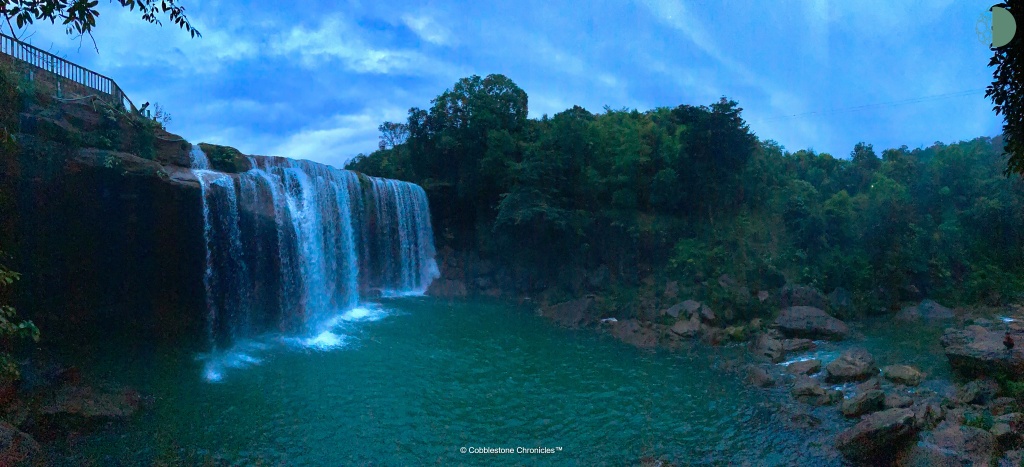
While there isn’t much to do apart from embracing the gusto of the waterfalls on one hand, and the equanimity of the quiet trail leading towards it, it is definitely worth the 90 or so minutes you would spend here! Next stop and our stay for the night, Shnongpdeng village near Dawki.
Dawki
Stunning as it might be, little did I know that Krang Suri was simply the beginning. Dawki is a border town in the southern part of Meghalaya, and one can witness the changing topography as the hills give way to the plains of Northern Bangladesh. As one approches Dawki, the presence of heavy trucks carrying quarry stones cross-border into Bangladesh increases substantially. The roads here are narrow and dusty, and countless trucks steadily make their way through the hilly terrain. Needless to say, driving the last few kilometres towards Dawki is painstaking, with traffic stalling for hours at times. So, beware if you are driving, especially during nights. Around 8km before Dawki, we exited the road towards Shnongpdeng, which was our stop for the night.
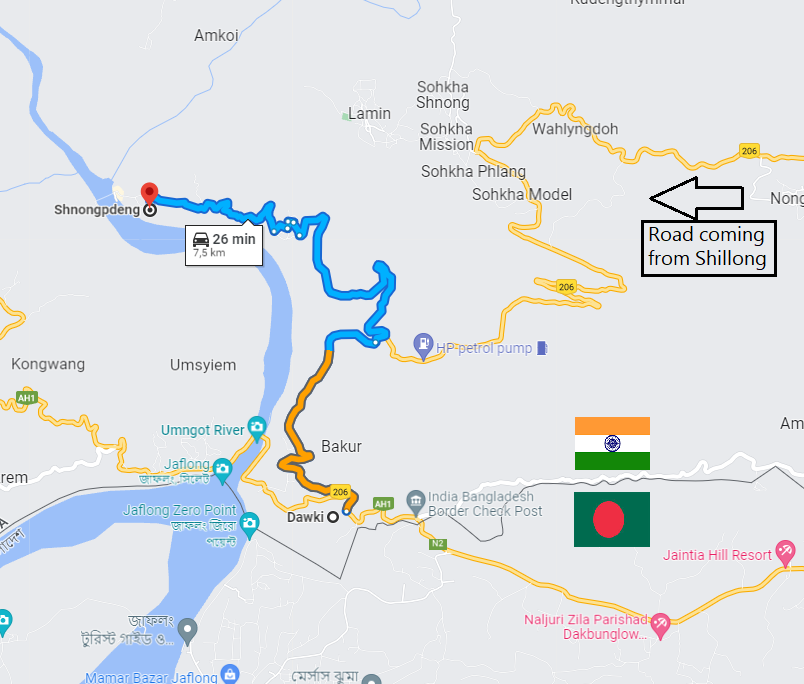
Shnongpdeng
Thanks to the lucid clean Umngot river, Shnongpdeng has become renowned for pictures of boats seemingly floating in the air. We reached here by late evening, just in time for dinner. Along the river here, there are many campsites and one can rent a tent and bedding for around ₹400-500 a night. There are also packages that can go upto ₹2500 which include of fancy meals and adventure activities during the day. Of course, these prices change according to season, and I can imagine the costs shooting up in the months of winter and early summer when the river is the cleanest, gleaming with its well known emrald-green waters.
The camp sites here are on the edge of the bank. The gushing waters fill the air with a peculiar dewy veridity. In this peaceful setting, lit a bonfire and you will certainly enjoy a meal of a lifetime! After that, we called it a day, excited to explore the region in the morning.

As we had expected, the morning was nothing short of spectacular. It had drizzled the whole night, the weather was still gloomy, but being the pluviophile I am, this was nirvana! Because of the rain, the waters weren’t as glassy clear as we’d thought. However, the sheer artistry of colours, thanks to the unsullied affluence of Shnongpdeng, was surreal. Now I have been to the mountains quite a lot, and I have seen them in all their colours. But, the rains in the hills of Meghalaya are indeed special. The clouds, the terrain and the waters form a conconction that is undeniably exquisite and undisputably glorious!
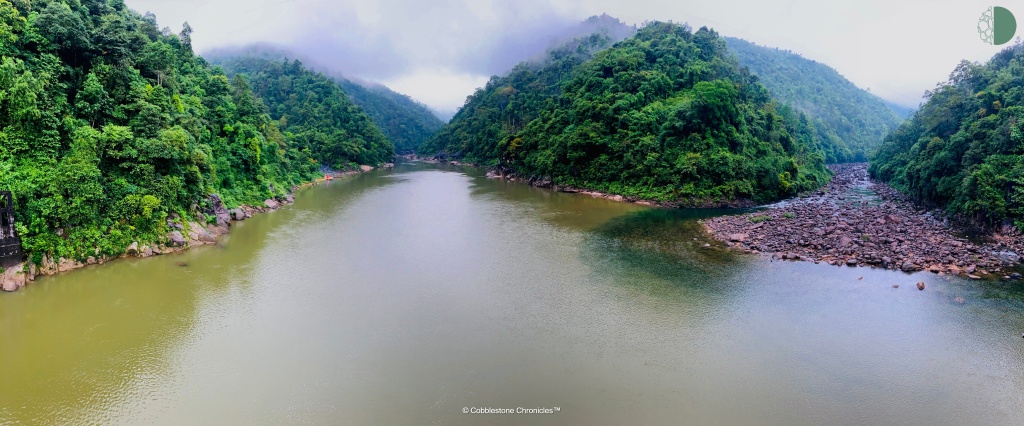
Apart from the sheer natural beauty it possesses, Shnongpdeng is also an emerging destination for water sports. The primary activity one can enjoy here is kayaking. Apart from that, snorkelling, cliff jumping and scuba diving are becoming increasingly popular. Note that all these activities are seasonal, and depend heavily on weather and the flow of water. This river is a also natural habitat for many fishes. So if you are sporty (and patient enough), you can also try your hand at fishing with the locals.
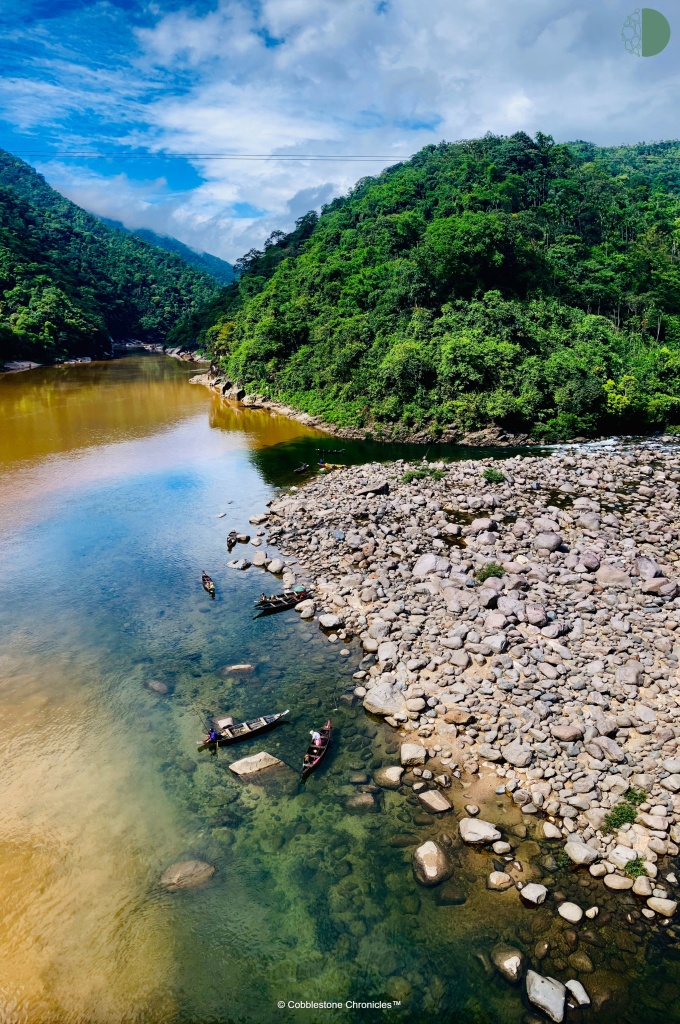
We rented a kayak for an hour or so, which was indeed a fascinating experience. While we’d have enjoyed more if the waters were clear, this was still an experience of a lifetime. Gliding on the smooth calm waters through dense silent jungles has a hypnogagic novelty to it. You can go downstream for almost 2km. Chimes of oars hitting the water and birdcalls in dense vegetation besides keep you company. After kayaking, we didn’t give a second thought before taking a dip in the clear cool water along the banks!

The tents in Shnongpdeng are situated on both sides of the river. There is long wobbly suspension bridge spanning across Umngot built for pedestrians. If you feel comfortable being swayed on the 200 feet bridge, high up on the water, this is a great spot to capture Umngot’s beauty to its fullest!

From the other side of the river, there are a couple treks in this area. However, the trails aren’t very well marked, atleast based on what the locals told me. Thus, it would be best to take a guide if you decide to make your way into the woods. All in all, I must say Shnongpdeng can even be the sole reaon behind your trip to Meghalaya. It will certainly make an impression on you, and honestly, despite the idiosyncrasies of the hills, you will find this place extraordinarily enticing! We spent around half a day here, and post a late lunch, we started our journey further to explore Dawki.
Indo-Bangladesh border
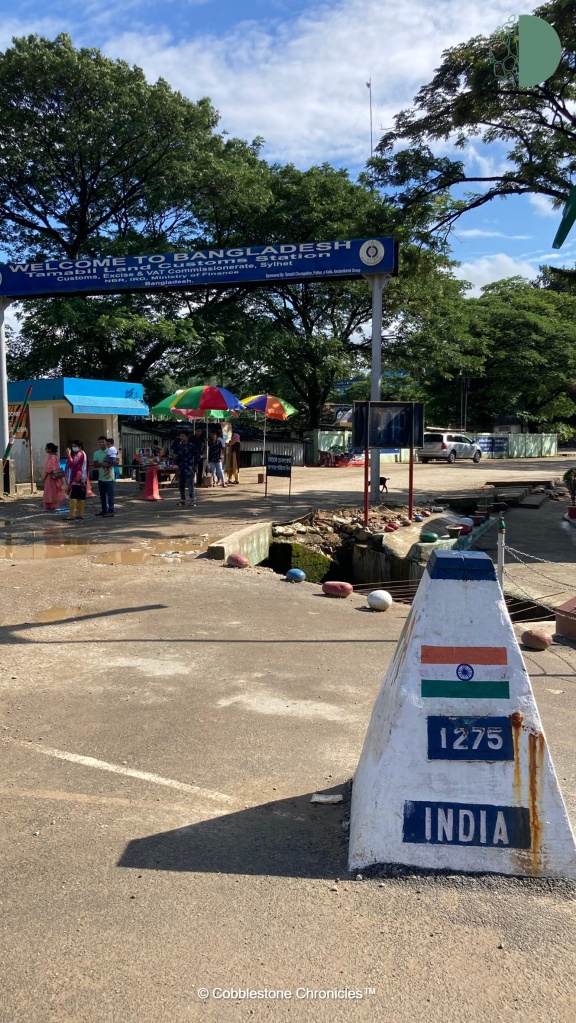
What makes the village of Dawki an interesting place is that it is located right on the Indo-Bangadesh border. Unlike most tightly secured borders, this is by far the most intriguing one if you wish to stand just feet away from Bangaladesh, while buying fruits from the fruitseller on the other side. Being a peace area, the security here isn’t very heavy. On most days, you would be able to step a foot inside Bangladesh, take few pictures with the neighbouring countrymen, without the officials on both sides raising any caution (though I would not encourage anyone trespassing more than a couple feet across the border). At times however, if requested, make sure you coordinate with the Border Security Force (BSF) personnel.
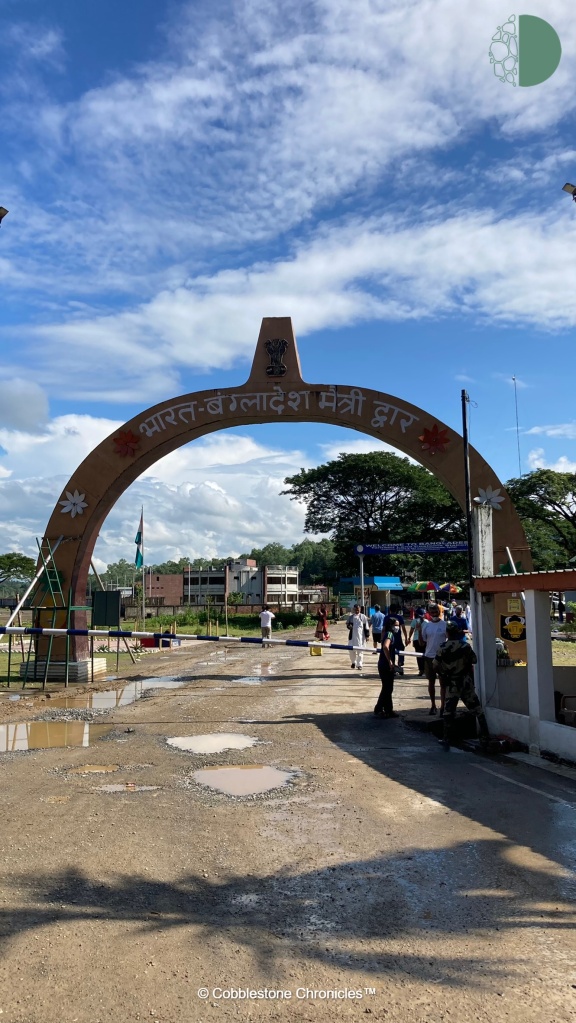
There are just a handful border crossings in the West Jaintia Hills in Meghalaya. As a result, the Dawki border crossing is critical for trade between India and Bangladesh. In peak season, more than 500 trucks cross this checkpost everyday, carrying quarry stone from India to Bangladesh. On the way back, the trucks carry processed cement and other construction aggregate. Heavy vehicles usually cross the border after evenings and up until early morning so as to reduce traffic jams in the nearby areas during the day. As a result, if you get to this border crossing by afternoon, like I did, you will get to see the boundary markers of both countries without any hassle.

We spent around an hour here, mostly clicking pictures. Agreed, one cannot compare this experience with the mesmerising Wagah border and its ceremonies. However, it’s not everyday that you get to see the literal edge of your country, is it?
After our two days, exploring Shillong, Dawki and a couple of places in the middle, we headed northwest towards Cherrapunji. In just two days, I had realised why Meghalaya is called the ‘Gateway to Heaven’. The hills, the greenery, the sublime rivers and waterfalls all seem to come together to make it so! The first two days of my trip were just the beginning, and I had my hopes up for the remainder of this trip. Spoiler alert, my expectations were surpassed with flying colours.
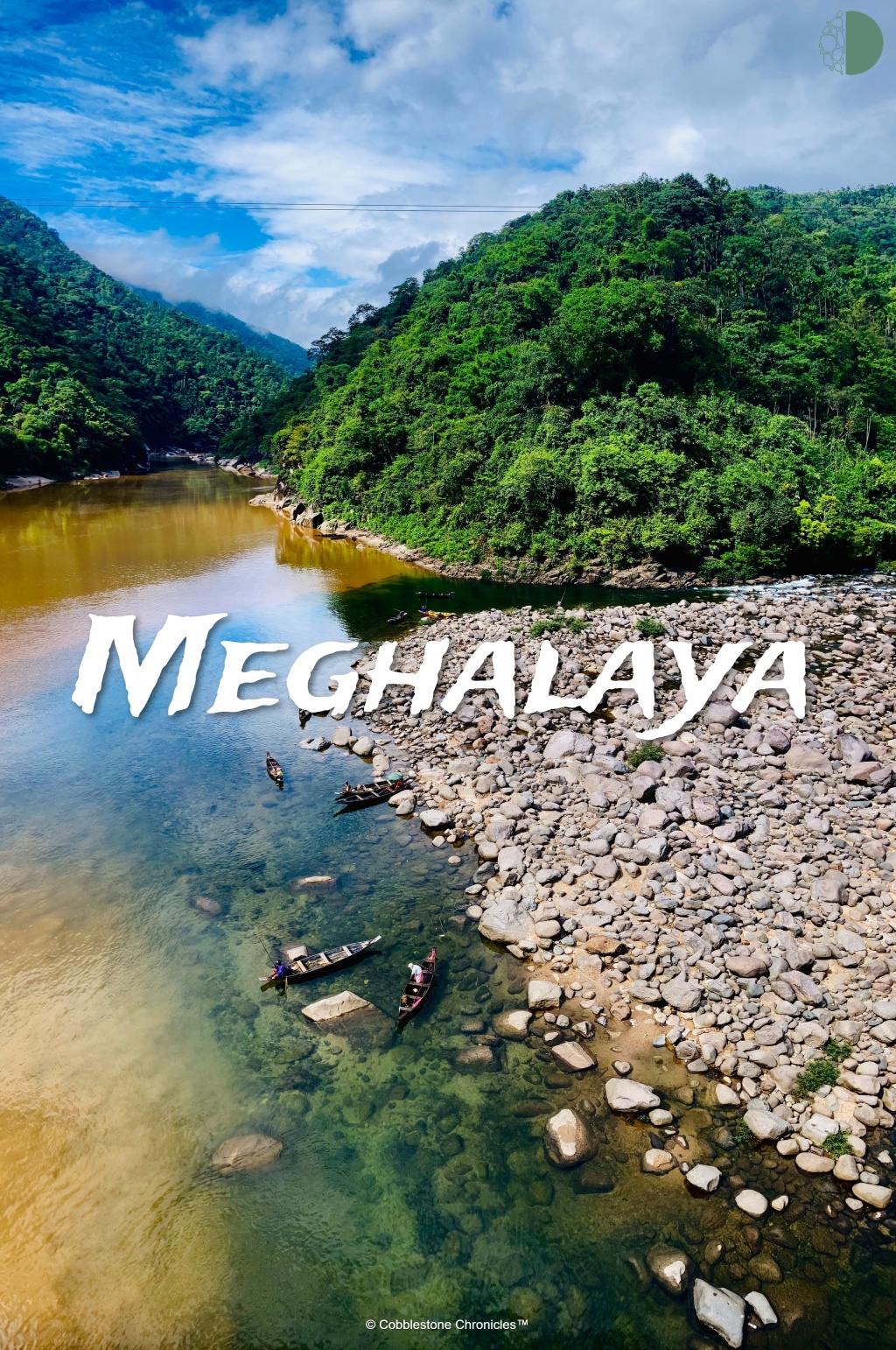
Leave a comment